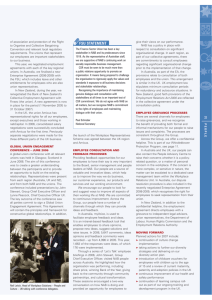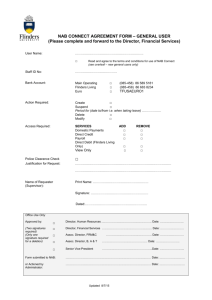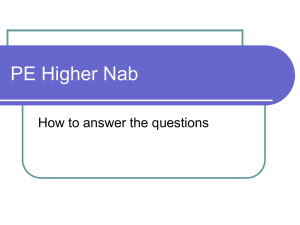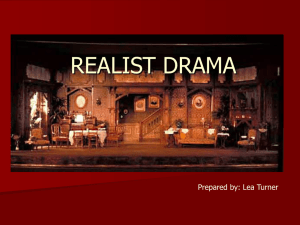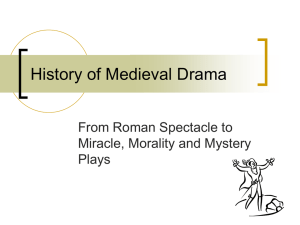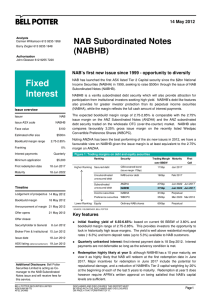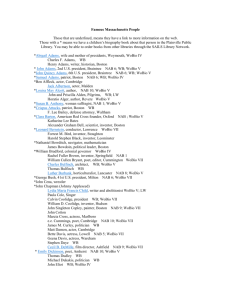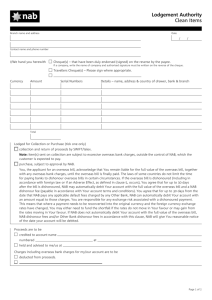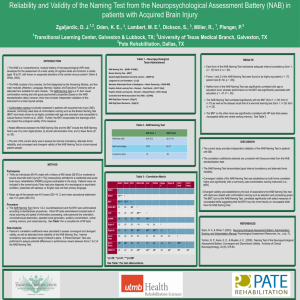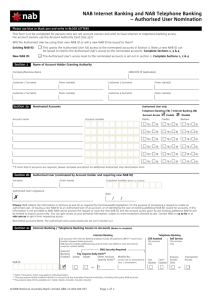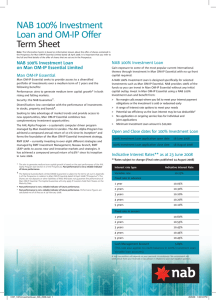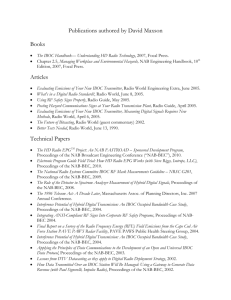Textual Analysis NAB
advertisement
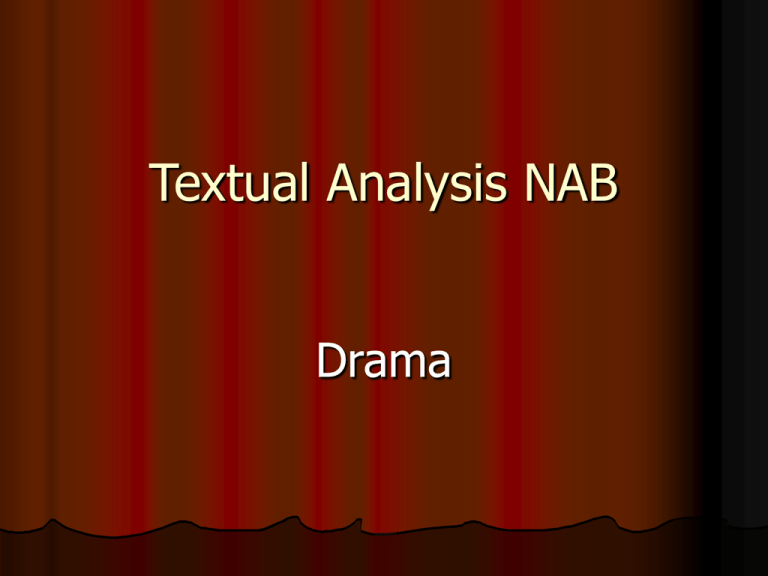
Textual Analysis NAB Drama What’s in the NAB? You will read an extract from a play you have not studied. You will answer about 8 to 10 questions on it. The NAB is out of 30 – you need 15 marks to pass. You have all studied a play before so you just need a few reminders about drama. It’s a piece of drama so remember… It was written to be performed on a stage in a theatre, to an audience. It is not real life but a play! Pay attention to any stage directions which help you imagine the set: Where is the action happening ? e.g. a room Are there doors (as props) for the actors to go through e.g. to leave / to enter another room / to make a dramatic entrance? Are there windows (as props) for the actors to look out? What furniture or other props are used? Why? How are the props arranged on stage? Why? The characters are put across by the actors. We learn about the characters through the dialogue: What they say and what others say about them How they say it e.g. tone of voice, pace of speaking The stage directions often tell us how the words are said and therefore how the character feels. The word choice also reveals feelings and emotions. We learn about the characters through the dialogue: The type of sentences used can reveal feelings and emotions. Exclamation sentences are easy to spot and often suggest strong feelings e.g. surprise, anger, fear, enthusiasm, joy etc Sentences with pauses [shown by ellipsis…] or dashes may suggest some hesitation on the part of the speaker or they may have been interrupted by another character. Dashes can be used to convey the natural rhythm of conversation (we often speak in incomplete sentences). We learn about the characters through the dialogue: The language used can reveal feelings and emotions. Look out for imagery (similes & metaphors) Repetition Alliteration And any other techniques you are used to analysing in close reading or literature The audience Characters sometimes speak directly to the audience to reveal their thoughts. In a Shakespeare play this device, called a soliloquy, happens a lot. Your NAB will not come from Shakespeare (!) but look out for any ‘asides’ to the audience or longer speeches in which the character is speaking his thoughts aloud for the benefit of the audience. Think about how the audience is meant to react to what they hear or see on stage e.g. be sympathetic, feel sad, laugh, be held in suspense…… We also learn about the characters through their actions. The stage directions tell us Where the character is on stage Their actions and gestures When they enter or leave The stage directions may also describe the character Here is a typical NAB question for Textual Analysis Drama [1] Int 2 How does the word choice in these lines show the feelings of the character? You should quote two examples of single words or short phrases and comment on each to explain how they show his feelings. To answer this, do not simply quote what the character says ( and don’t put the speech in your own words). First say what the feelings are, then…. Quote examples of the word choice and for each separate example comment on the connotations of the words – what the words suggest to us, not what they mean. Here is a typical NAB question for Textual Analysis Drama [2] Int 2 By referring to one example of his actions, show how the character’s mood is reflected during this speech. To answer this make it clear what the character’s mood is. Quote from the stage directions to show what the character does. Explain how this action shows his mood. Here is a typical NAB question for Textual Analysis Drama [1] Higher Show how the dramatist uses dialogue to develop your understanding of the emotions experienced by [the character] at this point. To answer this, do not simply quote what the character says ( and don’t put the speech in your own words). First say what the emotions are, then…. This is an analysis NAB so explain HOW How are the words spoken? Tone? How do you know? Word choice? (analyse) Sentence types? (analyse) Other techniques e.g. repetition Here is a typical NAB question for Textual Analysis Drama [2] Higher Give two pieces of evidence which reveal.. (something about the character) To answer this, quote from the dialogue or from the stage directions. You don’t always need to comment on the quotations but it might be safer to do so, briefly. Here is a typical NAB question for Textual Analysis Drama [3] Higher By referring closely to lines …, show how the language of (the character’s) speeches conveys aspects of his character. Look at how many marks the question is worth. State an aspect of character e.g. boastful / helpful / lonely… Quote evidence and justify it i.e. explain how the quotation backs up what you say about the character.


